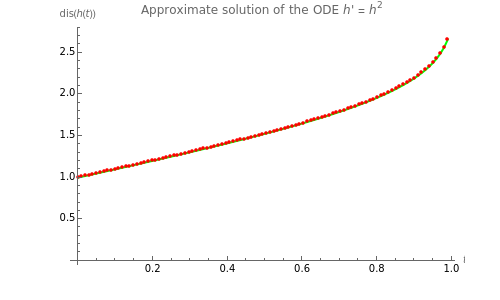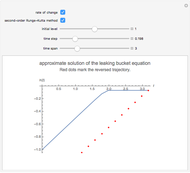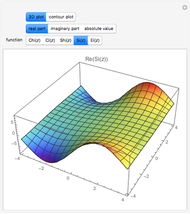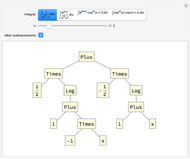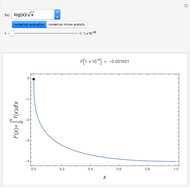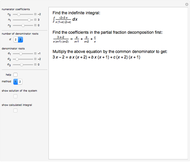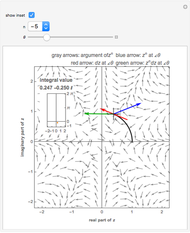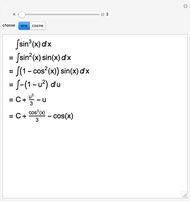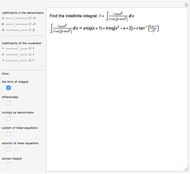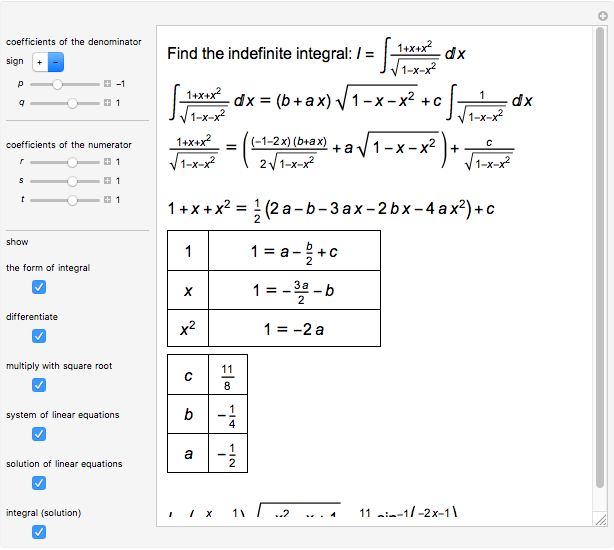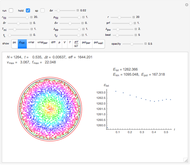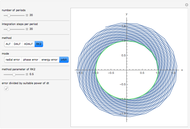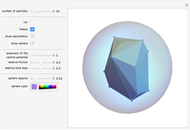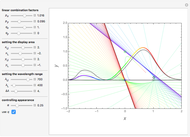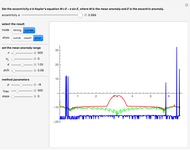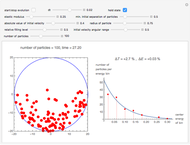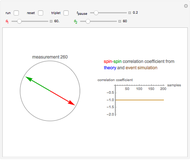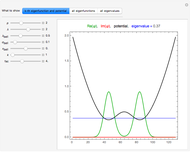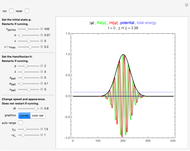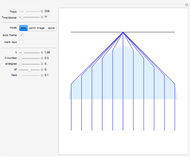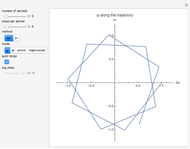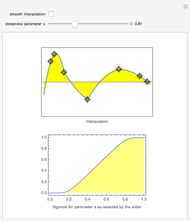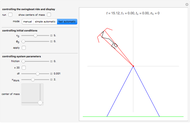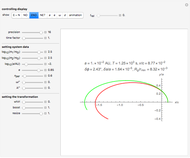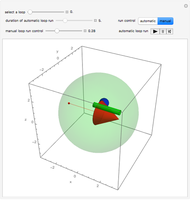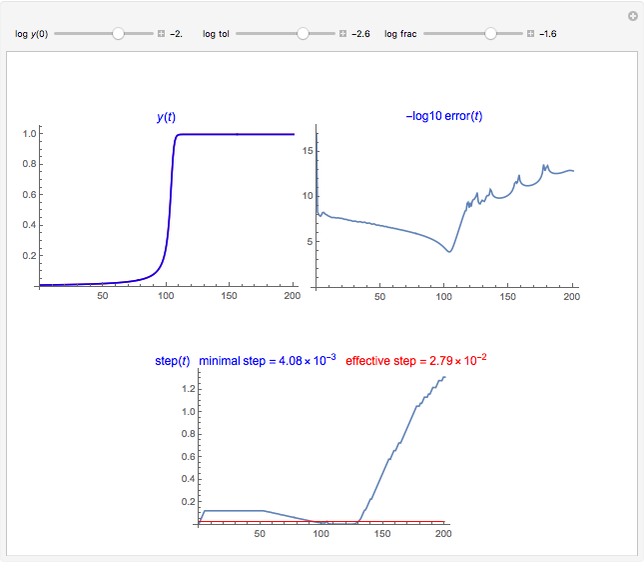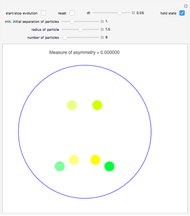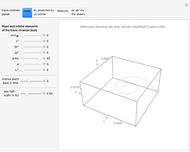Integrating "Beyond Infinity" and Back

Requires a Wolfram Notebook System
Interact on desktop, mobile and cloud with the free Wolfram Player or other Wolfram Language products.
Consider the simple ordinary differential equation  with initial condition
with initial condition  . The solution is obviously given by
. The solution is obviously given by  . It tends to infinity as
. It tends to infinity as  tends to 1. We now consider a time-discrete approximation to this solution as provided by the asynchronous leapfrog method. Since the evolution step formula does not involve potentially undefined operations, any such discrete approximation is well defined for all its
tends to 1. We now consider a time-discrete approximation to this solution as provided by the asynchronous leapfrog method. Since the evolution step formula does not involve potentially undefined operations, any such discrete approximation is well defined for all its  values. Of course, the approximated
values. Of course, the approximated  values grow dramatically and will soon transcend what can be represented even with Mathematica's arbitrary-precision numbers. Since the asynchronous leapfrog method is a reversible integration method, we should be able to go along each finite discrete trajectory back to its initial point. If the final point was "close to infinity", the computation needs to be done with a large number of digits in order to come back to its initial point. This is what the present Demonstration studies. Values are input by means of setter bars instead of sliders since updating the curve for higher precision and
values grow dramatically and will soon transcend what can be represented even with Mathematica's arbitrary-precision numbers. Since the asynchronous leapfrog method is a reversible integration method, we should be able to go along each finite discrete trajectory back to its initial point. If the final point was "close to infinity", the computation needs to be done with a large number of digits in order to come back to its initial point. This is what the present Demonstration studies. Values are input by means of setter bars instead of sliders since updating the curve for higher precision and  may take a few seconds. (This does not affect Autorun, which uses machine precision throughout.) The reversed trajectory is marked by red dots and one easily sees (if the box 'show also the reversed trajectory' is activated) whether the reversed trajectory reaches the initial point. In all cases where it fails to do so, increasing the value of precision will finally solve the problem. In some cases, precision up to 2000 is needed.
may take a few seconds. (This does not affect Autorun, which uses machine precision throughout.) The reversed trajectory is marked by red dots and one easily sees (if the box 'show also the reversed trajectory' is activated) whether the reversed trajectory reaches the initial point. In all cases where it fails to do so, increasing the value of precision will finally solve the problem. In some cases, precision up to 2000 is needed.
Contributed by: Ulrich Mutze (March 2011)
Open content licensed under CC BY-NC-SA
Snapshots
Details
Snapshot 1: Maximum stress, reaching the largest numbers. The integration is from  to
to  with
with  ; precision 1000 turns out to be insufficient for reversibility.
; precision 1000 turns out to be insufficient for reversibility.
Snapshot 2: Reversible trajectory that gets lost in machine precision. Here the integration is from  to
to  with
with  ; due to the larger value of
; due to the larger value of  , there are fewer steps in the critical domain
, there are fewer steps in the critical domain  and the
and the  values are less gigantic; so a precision of 250 is sufficient for getting a reversible trajectory.
values are less gigantic; so a precision of 250 is sufficient for getting a reversible trajectory.
Snapshot 3: Using machine precision, together with the remaining settings of Snapshot 2, spoils reversibility.
References
[1] Ulrich Mutze An Asynchronous Leap-Frog Method, 2008., http://www.ma.utexas.edu/mp_arc/c/08/08-197.pdf.
[2] Alternate link for [1]: http://www.ulrichmutze.de/articles/leapfrog4.pdf.
Permanent Citation
